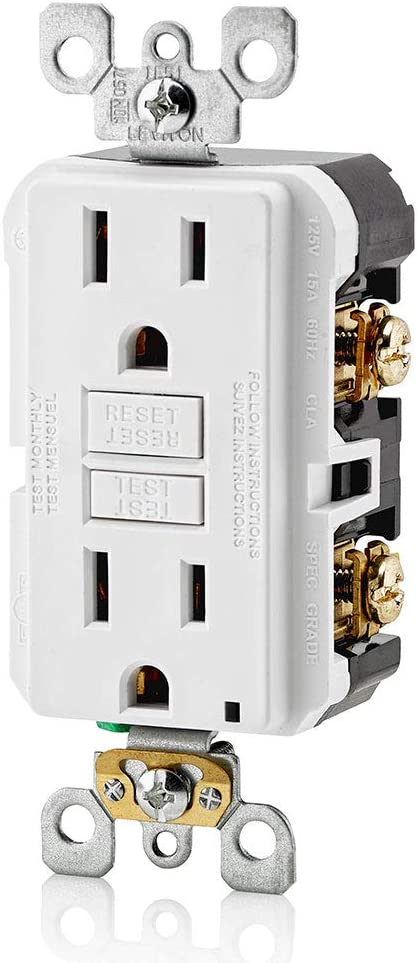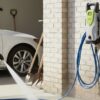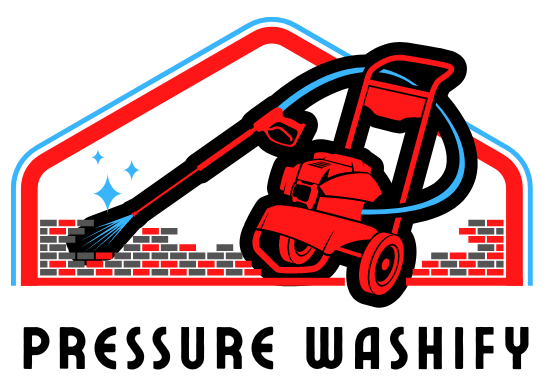Affiliate Disclaimer: This post may contain affiliate links, meaning we get a commission if you decide to make a purchase through our links, at no extra cost to you.
There could be several reasons behind your electric pressure washer’s inconsistent behavior, but the primary causes tend to be a defective power connection, a sensitive GFCI, a restricted water supply, an overheating motor, a stuck pressure unloader valve, or even a clogged water inlet filter.
Common Reasons for Electric Pressure Washers Starting and Stopping
1. Defective Power Connection
A shaky or interrupted power connection could be the primary reason for your pressure washer’s inconsistent performance. Loose connections, damaged cables, or worn-out sockets can all disrupt the flow of electricity, leading to start-stop issues.
2. Tripping of the GFCI (Ground Fault Circuit Interrupter)
Your pressure washer’s GFCI plug is a fantastic safety feature designed to protect the unit from electrical faults and imbalances. However, it can occasionally be a little too sensitive and cause it to trip, interfering with your washer’s smooth operation.
3. Inadequate Water Supply
Even though we’re discussing electric pressure washers, water is still very much a key player in their functionality. A restricted water supply can inhibit their performance and lead to start-stop issues. Make sure the water supply is uninterrupted and has the adequate pressure your washer needs.
4. Overheating Motor
Motors can sometimes generate excessive heat when the electric pressure washer is in use. If the motor gets too hot, it’ll automatically shut down to prevent damage, and then restart when it has cooled down, causing a start-stop cycle.
5. Stuck Pressure Unloader Valve
A crucial component in your pressure washer is the unloader valve, which helps manage pressure and redirects water flow when the trigger is disengaged. If the valve is clogged or stuck, it can cause inconsistent pressure regulation, resulting in the washer starting and stopping.
6. Clogged or Damaged Water Inlet Filter
The water inlet filter acts as a shield, keeping dirt and debris from reaching the pump. If it’s clogged or damaged, water flow can be restricted, causing unstable performance, which might be the reason for the start-stop issues you’ve been experiencing.

Troubleshooting and Fixing the Start and Stop Issues
1. Inspecting Power Connection and Extension Cord
Suspect a power connection problem? It’s time to put on your detective hat. Check if the plug is tightly fitted into the socket and if the extension cord (if you’re using one) is in good condition and not damaged. If possible, try plugging your washer into a different socket to rule out any power supply irregularities.
2. Testing and Resetting the GFCI Plug
Remember the hero feature of your washer, the GFCI? If it’s being too protective and tripping unnecessarily, it might be causing the issue. Try resetting the GFCI plug – you’ll usually find a little reset button on the plug that you just need to push to set things straight!

3. Ensuring Proper Water Supply and Water Pressure
Your washer is thirsty for a stable water supply to work efficiently. Make sure the water source is open enough to provide an uninterrupted flow. If you’re tapping from a well, ensure the well pump can provide the required flow. If you’re attached to a hose, check for any kinks disrupting the water flow.
4. Allowing the Motor to Cool Down and Providing Proper Ventilation
Motors can get hot under the collar, especially after prolonged use, causing them to stop functioning temporarily. If your washer’s motor is too hot, allow it to cool down. Make sure the washer is kept in a well-ventilated area to prevent overheating.
5. Cleaning or Adjusting the Pressure Unloader Valve
If the unloader valve seems to be the root of the issue, you might need a simple cleaning or adjusting job to get it working again. The valve might be stuck due to pressure build-up, dirt, or rust. A thorough rinse or an adjustment should do the trick.
6. Cleaning or Replacing the Water Inlet Filter
A clogged or damaged water inlet filter can disrupt water flow and cause a stop-start cycle. If the filter looks clogged, give it a good clean. If it appears damaged, consider replacing it for a smoother washer operation.
Tips on Maintaining Your Electric Pressure Washer
1. Regular Maintenance and Inspection
Make routine checks and maintenance of your new pressure washer. Regular checks can help you spot any developing problems early on, and address them before they escalate. Check power cords for any wear and tear, inspect the GFCI for tripping issues, and ensure the motor doesn’t overheat.
2. Properly Connecting and Using Extension Cords
The use of extension cords with pressure washers can sometimes be tricky. If you must use one, ensure that it’s heavy-duty, outdoor-rated, 12-gauge minimum, and less than 50 feet to avoid power loss.
3. Ensuring Adequate Water Supply Before Use
Before you set your washer to work, make sure that there’s enough water flowing from the source you’re tapping from. Remember, an inadequate water supply can also lead to inconsistent pressure from the washer.
4. Cleaning and Storing the Unit After Each Use
After each washing session, give your washer a light clean-up — rinse the water inlet filter, clean the unloader valve and nozzle, and wipe down the body. Store your washer in a ventilated and dry area, shielded from weather extremes.

Frequently Asked Questions (FAQ)
Q: Why does my electric pressure washer keep stopping and starting?
A: Your electric pressure washer may start and stop due to several reasons, such as a faulty power connection, a sensitive GFCI, inadequate water supply, an overheated motor, a stuck pressure unloader valve, or a clogged water inlet filter. Identifying and resolving these issues can help you achieve consistent washer operation.
Q: Should I use an extension cord with my electric pressure washer?
A: While it’s preferable to avoid using an extension cord if you must use one, ensure it’s a heavy-duty, 12-gauge minimum, outdoor-rated cord, and keep it under 50 feet in length to minimize power loss.
Q: How can I prevent my electric pressure washer from overheating?
A: To keep your washer from overheating, ensure it’s placed in a well-ventilated area while in operation and give it time to cool down if used for extended periods. Regular inspection and maintenance can also help prevent overheating issues.
Q: How often should I clean my electric pressure washer’s water inlet filter?
A: Cleaning your water inlet filter after each use or at least every few uses, can help prevent clogs and maintain optimal water flow. Monitor the filter regularly for debris and dirt, and clean it as necessary.
Q: How do I know if the unloader valve of my electric pressure washer is stuck?
A: When the unloader valve is stuck, it may cause either low or irregular pressure during operation, potentially resulting in the start-stop cycle. To resolve this, you may need to clean the valve or make some adjustments to it.
Q: Can prolonged use of my electric pressure washer cause motor issues?
A: Prolonged use can indeed cause some strain on your electric pressure washer’s motor, leading to overheating and temporary shutdowns. To minimize the risk, take breaks during long power washing sessions and practice proper maintenance.
Q: How can I improve the overall lifespan of my electric pressure washer?
A: Regular maintenance and inspections, proper storage, avoiding strain on the motor, and adhering to the manufacturer’s guidelines for usage can significantly improve the lifespan of your electric pressure washer.









